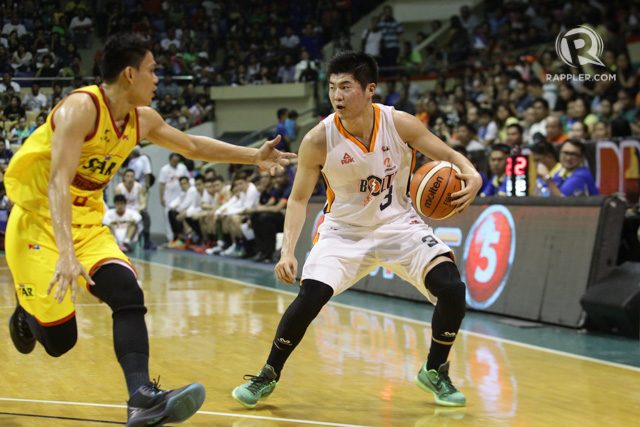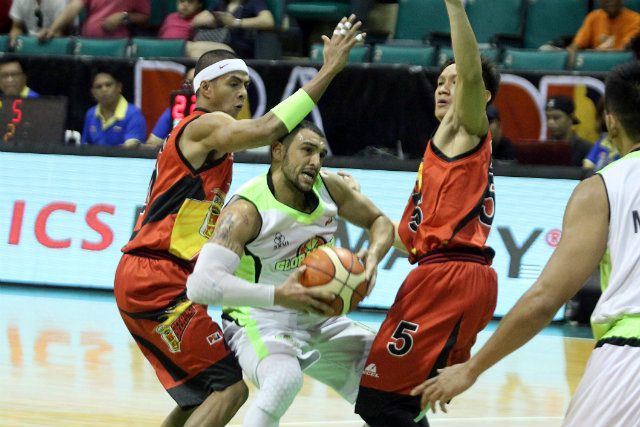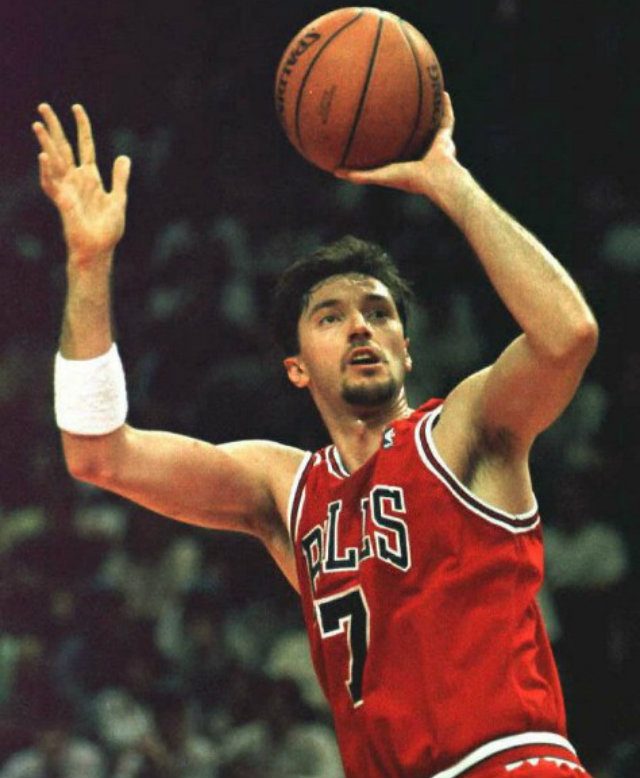SUMMARY
This is AI generated summarization, which may have errors. For context, always refer to the full article.

OSAKA, Japan – The decision by the PBA to open the Governors’ Cup conference to Asian imports for its 40th season was immediately met by scrutiny.
Some argued that doing so – in addition to the traditional recruiting of American imports – would take away playing time from local Filipinos in the PBA, who, although it’s rarely mentioned, already compete for minutes with Filipino-Americans in the league.
The case for bringing in Asian imports centered around the improvement of game quality. Some were swayed by this; others, not so much.
“I don’t know any Asian imports that are better than our [local] players,” two-time Grand Slam head coach Tim Cone told the media. “But we’ll look around and see if we can find one,” he later added.
Others tried to convince that inserting Asian imports in the PBA would improve relationships between the Philippines and its continental neighbors, along with marketing the league as the premier in Asia. This would create more exposure for the PBA, many inside the league office believed.
It’s been close to two weeks since the Governors’ Cup has tipped off, and it’s safe to say Asian imports have made an impact in the PBA.
Some are more optimistic stories, like 22-year-old Japanese playmaker Seiya Ando (14.5 PPG) immediately improving the Meralco Bolts, who for a long time have been searching for a point guard who could aid Mike Cortez in making the team more formidable.
On Sunday, May 17, the Bolts, who have never made the PBA Finals in their franchise history, defeated defending Governors’ Cup champions Purefoods, 83-81.
However, there’s also the case of Sanchir Tungalag, who pundits regard as the best basketball player out of Mongolia and was expected to make Barangay Ginebra San Miguel a contender to reach the semifinals of this conference’s postseason.
Instead, Ginebra is now 1-3 after losing to Blackwater in Dipolog City (to be fair, Greg Slaughter missed all games), Sanchir is averaging only 6 points on 33% shooting in 13 minutes a game, and he’s already been benched by new team head coach Frankie Lim (against Talk ’N Text) after drawing the coach’s ire for not playing defense.
But that’s just on the basketball court. Off it, the impact of the PBA’s new standouts from around Asia – Palestine, Jordan, Japan, Mongolia, Taiwan, and Syria – have benefited the league.
“Asian imports open the PBA to world wide fans. The putting up of Asian imports not only helps each PBA team cover their weak positions, but it also opens up the PBA to a different set of fans, even if they are not Filipinos,” GlobalPort Batang Pier team owner Mikee Romero said in a statement.
“It is like opening the PBA to the international world,” he added. “Suddenly PBA teams have bigger audiences in fans [that are] Palestinian, Iranian, Japanese, Mongolian… this marketing strategy is a stroke of genius.”
A league source told Rappler that more “Asian fans are monitoring the PBA and their idols.” He said that per the league’s monitoring system, Twitter has blown up whenever Asian imports are on the floor, with a multitude of tweets from Arabia, Mongolia, and Palestine, to name a few, coming in and talking about the PBA.
And it’s not just during the games or in social media where the impact has been felt. “The marketing wave has been unimaginable,” a league source said, “there are more ticket requests from foreigners.”
“We can look at growth in so many ways – [like] in big global corporations, it’s through mergers and acquisitions. In the ASEAN, we call it integration,” PBA Chairman Pato Gregorio said in a conversation with Rappler.

“In the PBA, as future professional basketball Asia, we simply invite our Asian neighbors and say, ‘Let’s play together.’”
‘Like when the NBA opened up its teams to…European [players]’
Romero compared bringing in Asian imports to what the NBA did by recruiting European basketball players.
“It’s like when the NBA opened up its teams to be beefed by European [players] – Toni Kukoc was one of the first Euro players to transfer to the NBA,” said Romero. “It has opened a more exciting NBA. It’s the same thing in the PBA.”
Kukoc was recruited by then Chicago Bulls general manager Jerry Krause even years before the Croatian made his NBA debut in the 1993-1994 season.
Krause has been the subject of criticism for his disputes with Michael Jordan and Phil Jackson, but his relentless pursuit of Kukoc, who averaged 11.6 points and 4.2 rebounds a game in his career and won the Sixth Man of the Year Award in ’96, helped Chicago win 3 straight NBA titles from 1996-1998.
Kukoc was soon followed by many other great Europeans in the NBA like Tony Parker, Dirk Nowitzki (who won an MVP award in 2007), Manu Ginobili, the Gasol brothers Marc and Pau, Andrei Kirilenko, and Goran Dragic, to name a few.
Changing the game
The Europeans have not only proven that they can compete with the best athletes America has to offer, but have also altered the style of play in today’s NBA. Before Nowitzki and Gasol, how many big men in the league could hit outside shots like clockwork?

Nowadays, the best bigs in the league are those who have consistent jump-shooting range: Chris Bosh, LaMarcus Aldridge, Kevin Love, Al Horford.
Blake Griffin, the second-runner up to last year’s NBA MVP award, had a reputation of being just a dunker and was a threat only in the paint in his first few seasons. But over the past two years, Griffin has developed a reliable mid-range jumper that has made him even more lethal.
It’s tough to predict now what ramifications these Asian imports will have with how the game is played in the Philippines. At the top of my head, I can think of the Chinese inspiring Filipinos to improve their shooting form: elbows more tucked in, a higher point of release, and the always-important follow through.
But away from the matches, the PBA is already getting a sense that their gamble has paid off.
“The PBA is a 40-year-old super brand,” a league source told Rappler. Bringing in Asian imports, the source says, is “transforming the brand into bigger than just in the Philippines.”
What that means is simple: having Asian imports also further markets the brands in the PBA.
When companies decide to put a team in the PBA, they’re not just in it to join in on the competition. PBA games are watched by thousands at the arenas and millions more at home, making it a powerful advertising tool.
That’s why Tim Cone’s team changed from San Mig Coffee to Purefoods and then to Star in a span of one season. That’s why a legendary franchise like the San Miguel Beermen changed their uniforms, chose new colors, and was then known as the Petron Blaze Boosters.
Be honest: did you know of a paint brand named Rain or Shine before you watched their squad in the PBA?
Now, when fans of the Jordan national team see Sam Daghles representing Talk ’N Text’s name, doesn’t that make them considering buying a cellular sim card from that company if they visit or move to the Philippines? How about those already living in the country?
“There is more to it than the competition,” a league source said, and he’s correct.
“It was the right time (to bring in Asian imports.)”
Challenges will still be present – especially on the hardcourt. If Sanchir’s marriage with Ginebra continues down this path and turns into an ugly divorce, the franchise and the league risk the player returning to his home country and not giving a vote of confidence about his time in the Philippines.
There’s also the unpredictability of disrespecting local players.
A source from one PBA franchise told Rappler that they have looked into bringing in an Asian import, but are unsure of doing so for the fear of how some of their locals would react to reduced playing time.
More playing time for those making a living in the PBA means more minutes, which means more opportunities to display their talents, which means possibly better statistics and averages. The better the numbers, the higher the payday come contract negotiations.
But that’s only half the battle. With improved marketing and exposure, the PBA is already reaping the benefits of having Asian imports in the league.
– Rappler.com
Add a comment
How does this make you feel?
There are no comments yet. Add your comment to start the conversation.